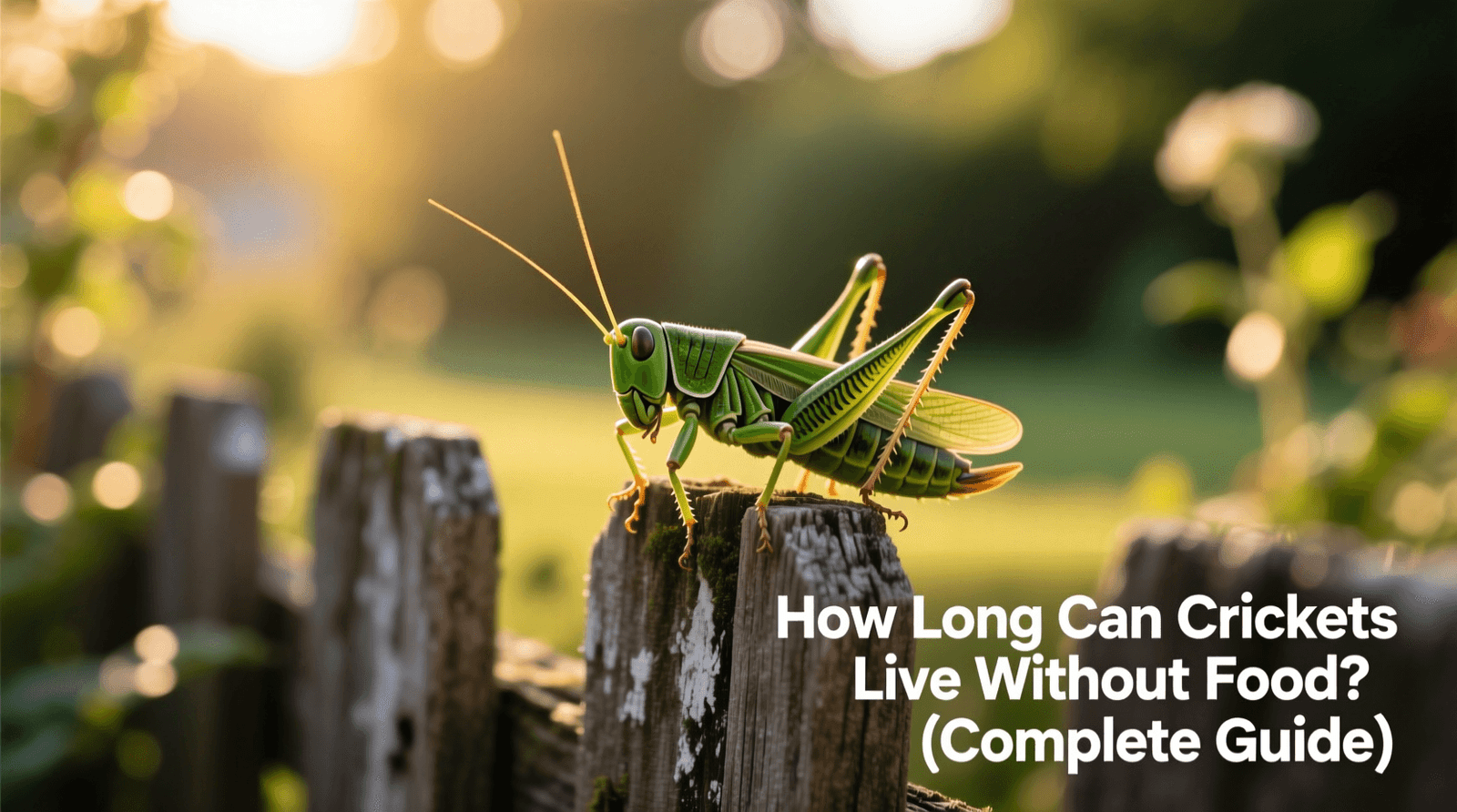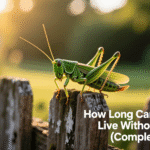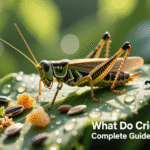If you’ve ever heard the constant chirping of crickets inside your house, you might wonder how long these tiny insects can survive without food. Crickets are resilient creatures that adapt easily to different surroundings, but their cricket lifespan depends on more than just food. In this guide, you’ll learn everything about how long do crickets live, their life stages, and what affects their survival both indoors and outdoors.
Introduction – The Secret to Cricket Survival
Crickets are known for their ability to thrive in almost any warm environment. These small noisy pest insects often enter homes searching for warmth, moisture, and shelter. While many believe they live for months, the average life of a cricket is quite short. Most species, including Acheta domesticus (house cricket species), live around 8 to 10 weeks.
However, their survival depends on many factors like temperature, humidity levels, and access to food or water. Without food, crickets in the home might survive for about two weeks, depending on the environmental conditions for crickets. In drier, cooler areas, their energy drops fast, and their cricket behavior changes quickly.
Understanding the Life Cycle of Crickets
The cricket life cycle includes three main stages: the cricket egg stage, cricket nymph stage, and adult crickets. Each stage plays a vital role in their survival. During the egg stage, female crickets lay eggs in soil or dark, damp places. Within two weeks, juvenile crickets hatch and begin feeding immediately.
As nymphs, they grow fast through several molts, shedding their outer layer in a process called molting. The cricket molting process continues until they become fully grown adult crickets. Under normal warm environments, this transformation takes about eight weeks. However, without food, the life stages of crickets slow down, and survival rates drop sharply.
The Role of Food in a Cricket’s Life
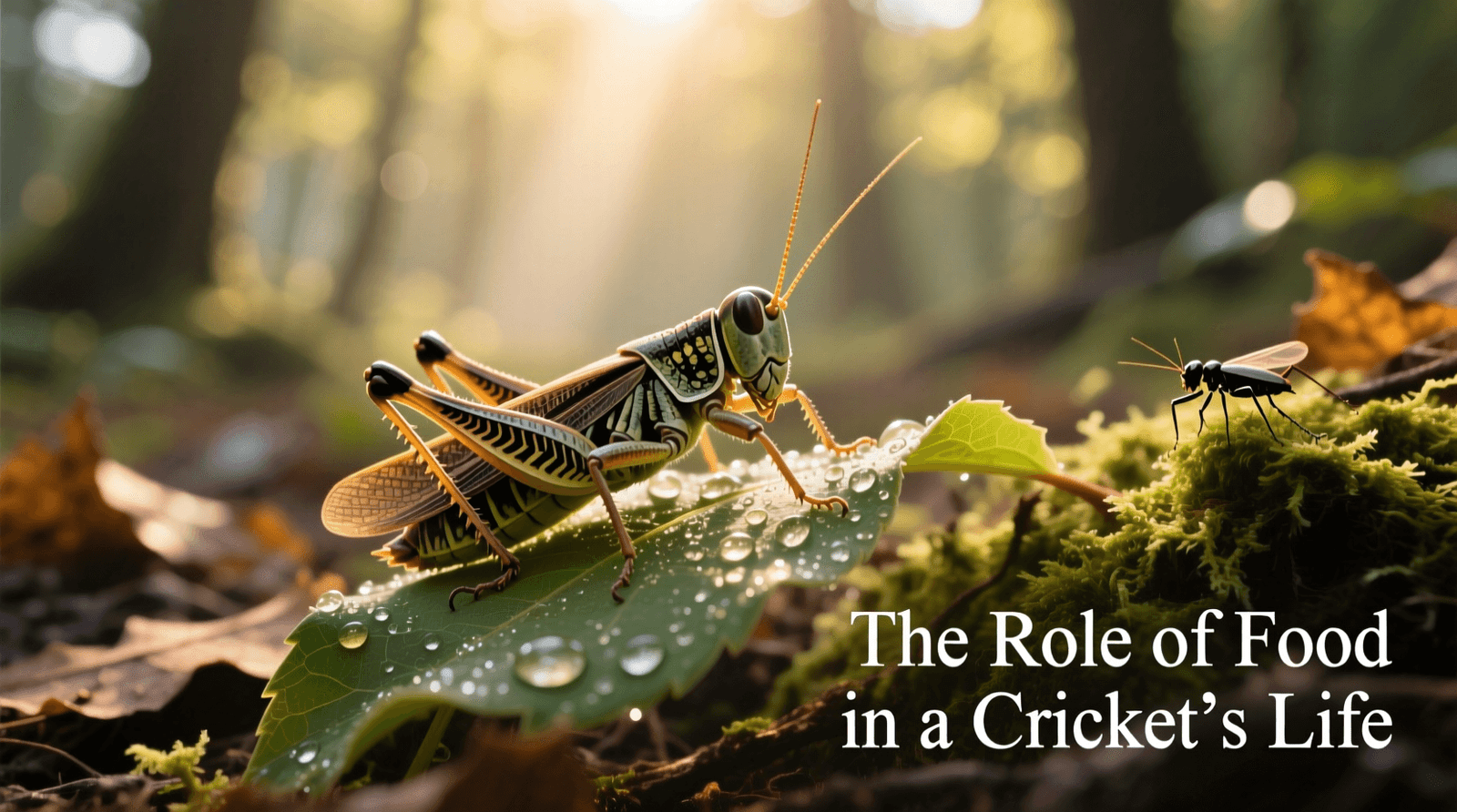
Food is crucial for cricket reproduction, growth, and energy. Crickets eat a variety of materials such as grains, decaying plant matter, and even smaller insects. A healthy How Long cricket lifespan depends on constant access to nutrition.
In the absence of food, crickets use their stored energy to stay alive. However, this can’t last long. After several days without nourishment, their bodies weaken, their cricket chirping fades, and movement becomes sluggish. Eventually, their survival depends solely on the temperature effect on crickets and available humidity for crickets.
How Long Can Crickets Survive Without Food or Water?
If you’re wondering how long crickets survive without food, research shows they can last up to two weeks. When water is unavailable, they might live for only five to seven days. How Long House crickets living in a warm indoor environment often survive slightly longer due to consistent temperatures and moisture in the air.
The table below shows the average time different cricket species survive without food and water:
| Cricket Type | Without Food | Without Water |
|---|---|---|
| Acheta domesticus (house cricket species) | 10–14 days | 5–7 days |
| Field crickets | 8–12 days | 4–6 days |
| Cave crickets | 9–13 days | 6–8 days |
Factors That Affect Cricket Survival Without Food
The environmental conditions for crickets play a major role in their survival. Humidity levels, warmth, and access to dark, safe places determine how long they can go without eating. In dry or cold weather, crickets dehydrate fast and die sooner.
Predators also affect survival rates. In natural settings, lizards, birds, and spiders often reduce cricket population numbers. Inside homes, they can last longer if they find hidden spots near food sources like garbage, crumbs, or pet food.
Behavioral Changes During Food Scarcity
When food becomes scarce, crickets display unique cricket behavior. They move slower and stop producing cricket sounds as they conserve energy. Some may turn to cannibalism, eating weaker crickets to survive.
In extreme cases, they seek out dark habitats like basements, attics, or behind appliances. This explains How Long and why crickets in basements and garages are common during colder months. These areas provide warmth and better chances of survival without much food.
Amazing Adaptations That Help Crickets Survive
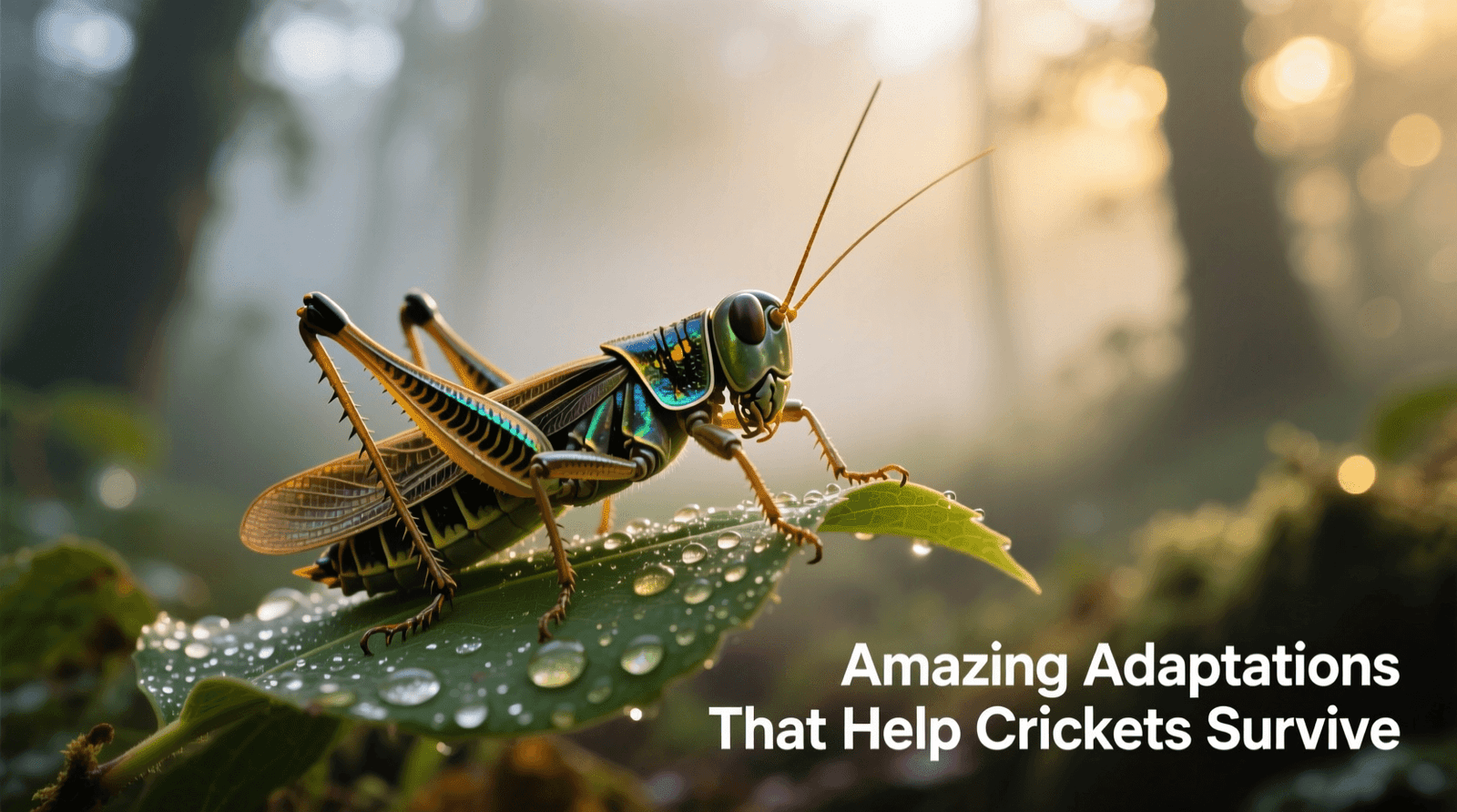
Crickets are omnivorous insects with fascinating adaptations. Their insect life cycle allows flexibility in food choices. When faced with hunger, they consume organic waste or dead matter, becoming decomposer insects that help clean the environment.
They’re also experts at moisture retention. By minimizing activity, they conserve water and energy during scarcity. These traits make them remarkable examples of environmental adaptation among insects.
Case Studies and Experiments on Cricket Survival
Several laboratory studies show how Acheta domesticus (house cricket species) adapts to limited resources. In one experiment, adult crickets kept in warm environments without food lived an average of 10 days. In another test with humidity levels controlled, crickets survived longer when moisture was present.
These findings prove that water plays a greater role in cricket survival than food. In short, how long do crickets live depends more on access to hydration than nutrition.
Feeding Pet Crickets – How to Keep Them Healthy
For those keeping feeder crickets as pet food, maintaining a proper diet is essential. What attracts crickets the most are fresh vegetables, fruits, and grains. To ensure a balanced cricket lifespan, include calcium-rich foods and hydration gels.
You should also maintain suitable humidity for crickets and clean their container often. A clean setup prevents mold and reduces the risk of pest infestation. If kept properly, pet crickets can live up to 12 weeks and stay active throughout.
Signs of Starvation and Poor Diet in Crickets
Starving crickets become weak and stop chirping. You might notice decreased movement, dull color, and slow response to light. This is a clear sign of poor cricket nutrition or dehydration.
Pet owners should act fast if they see these symptoms. Offer food immediately and restore moisture levels to prevent further decline. Understanding the cricket life cycle helps you manage these signs before they become fatal.
How to Prevent Starvation in Feeder Crickets
Preventing starvation begins with consistency. Always provide access to small amounts of food and water. A simple feeding dish with vegetables or grains works best. Crickets also need shelter to stay calm, as stress can shorten their average life of a cricket.
Avoid overcrowding in containers since it causes competition and cannibalism. Keep the temperature stable and ensure proper humidity levels. If you raise them for reptiles, gut-load them before feeding to enhance nutrition.
Crickets in Nature – Surviving the Wild
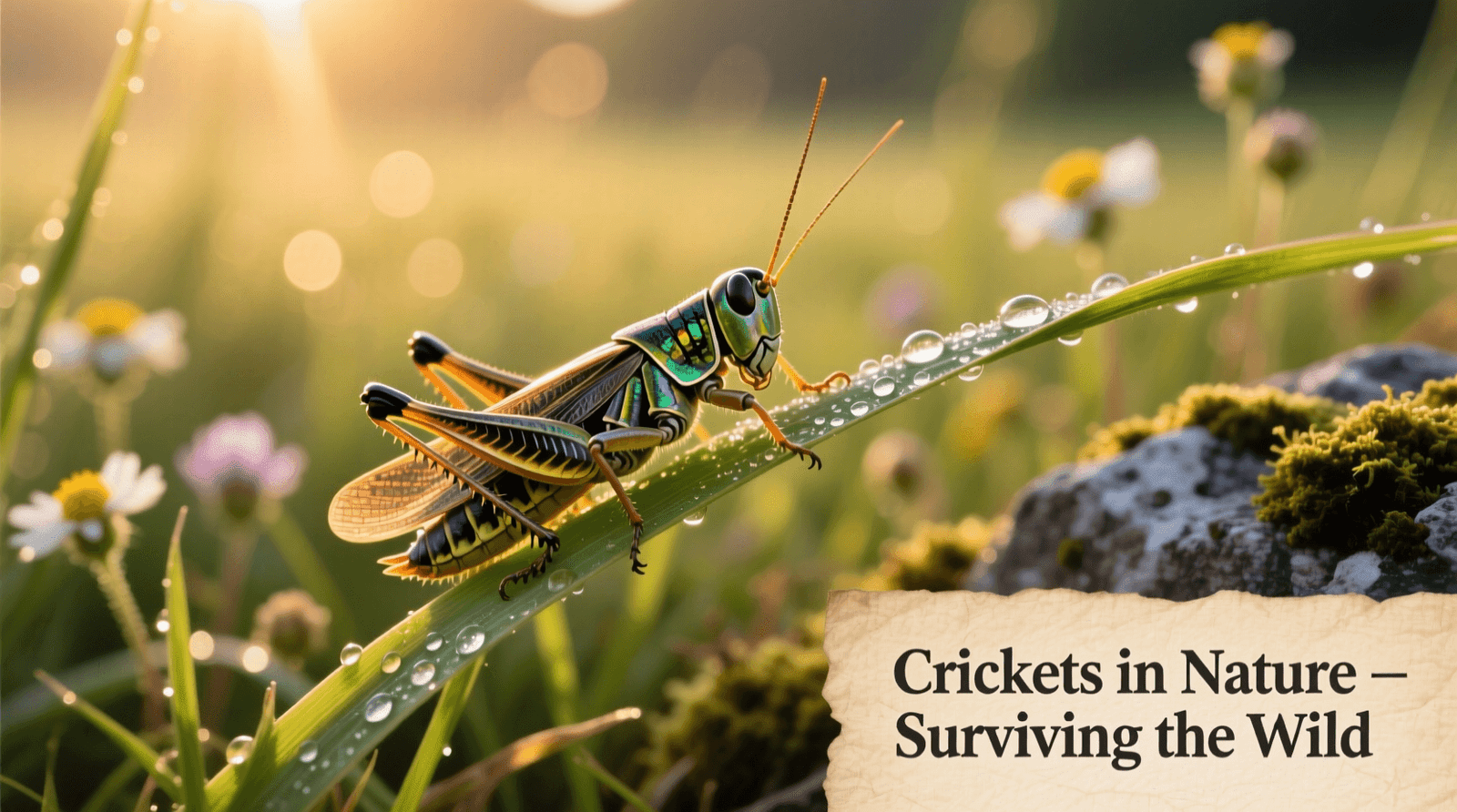
In the wild, crickets rely on instinct and adaptability. Field crickets often feed on decaying organic matter or crops, while house crickets survive near humans, eating crumbs or garbage. Their cricket lifespan outdoors depends heavily on predators and weather.
Cold nights shorten survival, but crickets in the home often enjoy longer lives due to safety and warmth. This connection between human environments and indoor pest problem explains why they become a common pest infestation during summer.
Why Understanding Cricket Nutrition Matters
Knowing how crickets feed and survive helps in home pest management and pest prevention. Understanding how to prevent crickets indoors allows homeowners to act early. For pet owners, it ensures a longer, healthier cricket lifespan.
Professionals like Specter Pest Control services often stress the need for home inspection to find hidden infestations. With low-impact pest solutions, they control the problem without harming your household environment.
Final Thoughts on Cricket Longevity
Crickets may not live long, but their adaptability makes them fascinating. Their short insect life cycle teaches us about resilience, balance, and environmental harmony. Whether you’re a pet owner, homeowner, or pest control expert, understanding how long crickets live indoors and outdoors can help you manage them better.
If you’re struggling with a pest infestation, consider contacting a professional exterminator for lasting results. A proper home inspection ensures peace of mind and restores quiet nights free of noisy pest insects.
My name is Mohd Ali, and I’m a digital marketer, content writer, creator, video editor, and blogger. Every day, I share information related to cricket and football on my blog. I reside in the city of Hyderabad, and I completed my graduation from EIILM University, Sikkim. I am the founder of newsblog4u.com.
